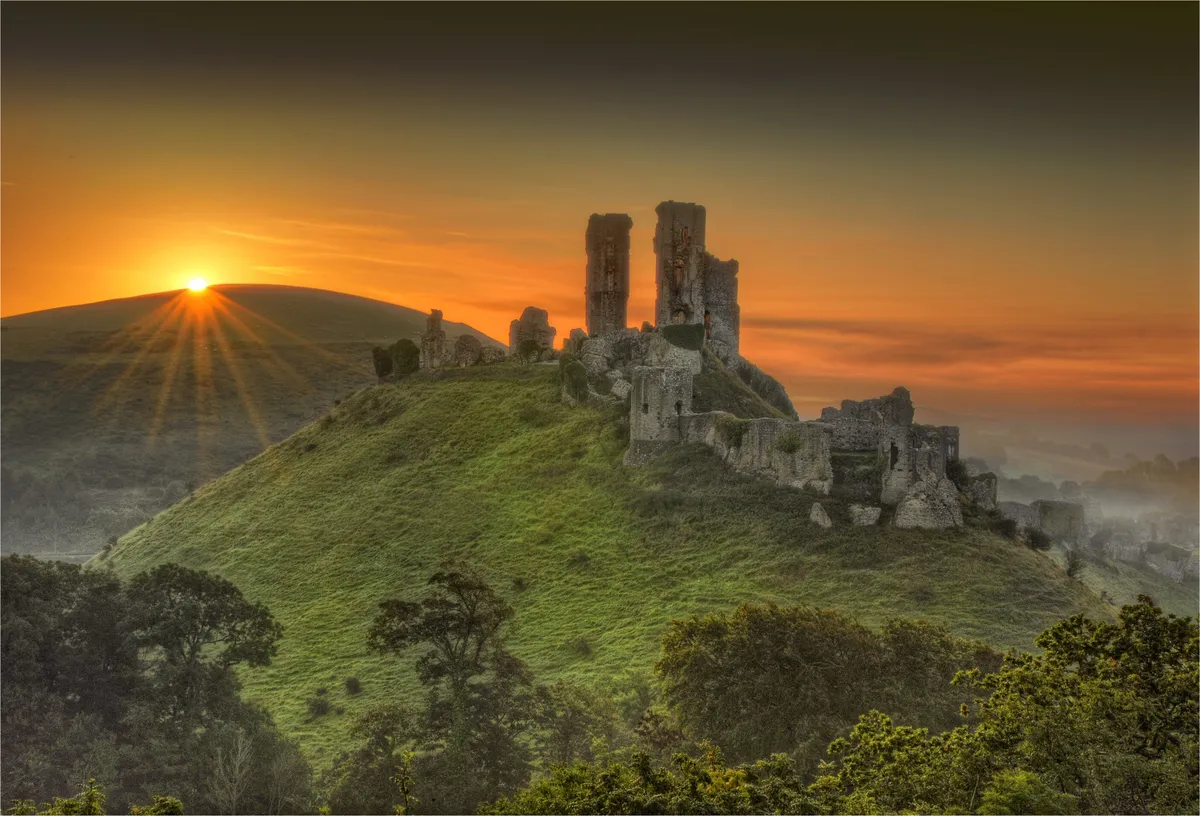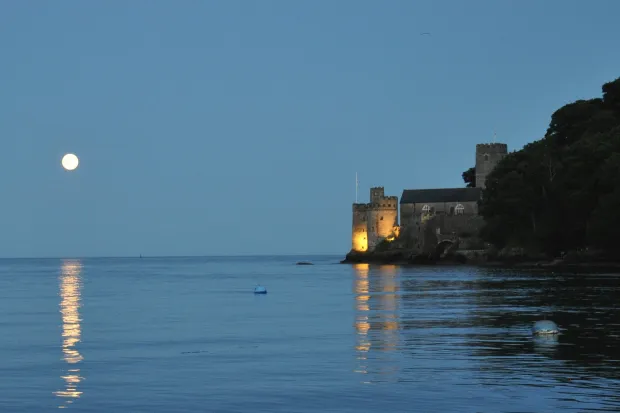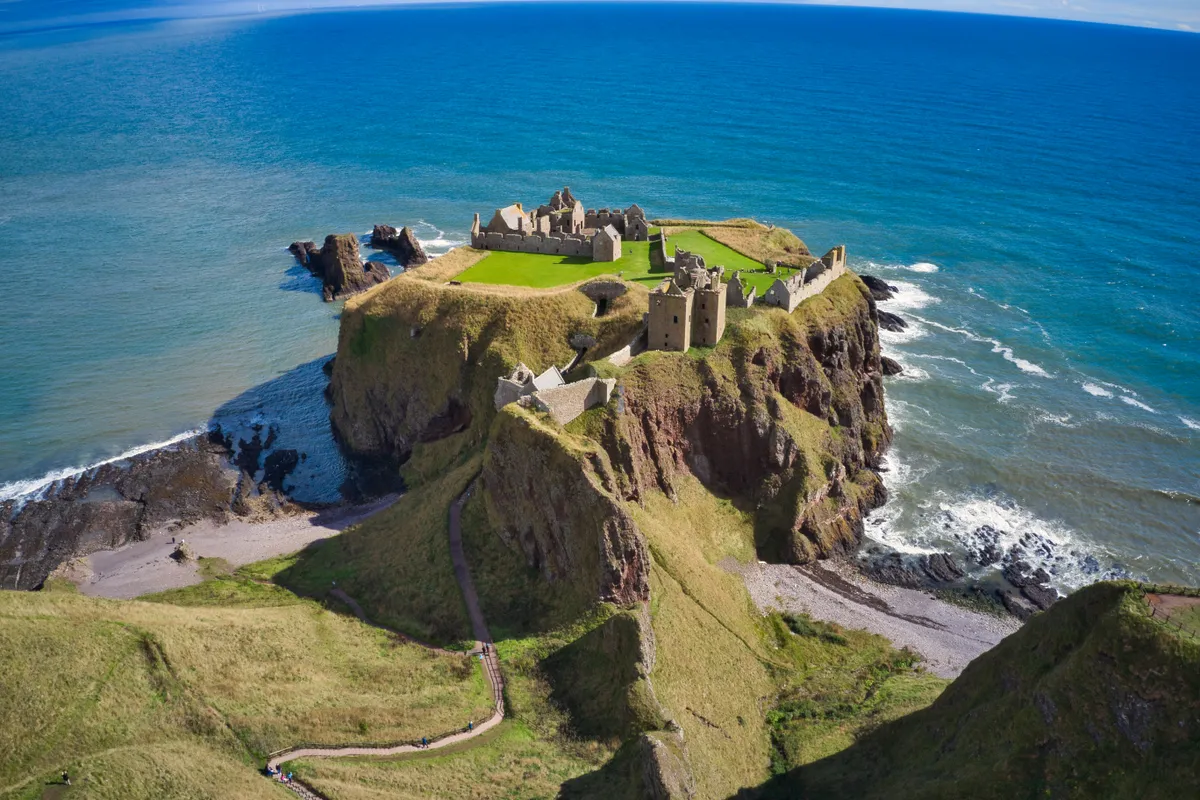Throughout history, from the Viking and Norman invasions to the Napoleonic and Second World Wars, Britain and the island of Ireland has been under constant threat of invasion by sea. For more than a millennium, these shores have been protected by forts and castles up and down our vast coastline.
In Wales the grand Norman Castles were built to subdue the local population, in Scotland castles were built by clan chieftains to protect their lands from warring neighbours, and during the uneasiness of the Napoleonic era, gun towers were constructed to protect against our nearest enemy, just across the sea.
Today, these castles betray their long and bloody pasts to become the subjects of painters, poets and artists. They have the power to fire the imagination of the young and old alike as we climb their towers and walls, dreaming of a long lost time.
In this guide, we reveal 10 of the most dramatic coastal castles that you can visit today, from Conwy Castle in Wales and Dunluce Castle in Northern Ireland, to Tintagel Castle in England and Eilean Donan Castle in Scotland.
Looking for more castles to visit in the UK?
Britain's ancient castles are woven into the rich heritage of our cities and countryside. Explore remote medieval ruins and iconic castles with our guide to the best castles to visit in Britain.

10 spectacular coastal castles to visit in the UK
Tintagel Castle, Cornwall

Exposed on a rocky outcrop, with the raging Atlantic Sea below and the wide-open Cornish sky above, the very elements which make Tintagel a special place to visit have reduced it to a crumbling, romantic ruin.
Despite its ruinous state, the castle sees nearly a quarter of a million visitors a year, attracted in part by its associations with King Arthur, the legendary king of the Britons.
- Find out more about Tintagel Castle
Dover Castle, Kent

Dover Castle began life as a motte-and-bailey fortress in the 11th century. Built under the instruction of William the Conqueror, it served to protect the narrowest point of the English Channel while acting as a show of power to any would-be invaders.
Positioned above the town of Dover and its famous white cliffs and with a commanding view of the harbour, Dover Castle is an imposing sight and a must-visit location for anyone exploring this divine stretch of Kent's south coast.
- Find out more about Dover Castle
Eilean Donan Castle, Scotland

Eilean Donan means the Island of Donan in Scots Gaelic. Its name comes from Saint Donnan of Eigg, who set up a chapel on the island in the 6th century. The castle itself was built in the 13th century.
A picture-postcard castle, Eilean Donan has been used in many films, including Elizabeth: the Golden Age and the James Bond film The World Is Not Enough. Fans of 1980s fantasy film Highlander may also recognise the castle as the seat of Clan MacLeod and home of star Christopher Lambert’s character Connor MacLeod.
- Find out more about Eilean Donan Castle
Conwy Castle, Conwy

In the late 13th century, when Edward I ordered the building of a castle on the site of the Cistercian Aberconwy Abbey of Saint Mary, he did so for far more than defensive reasons. The abbey was the resting place of Llywelyn ap Iorwerth, or Llywelyn the Great, King of Gwynedd and Prince of the Welsh.
Conwy is exceptionally well preserved and one of the most complete castles in the country. A UNESCO World Heritage Site, it boasts stunning views over Eryri (Snowdonia). Visitors can walk up its 700-year-old towers, along the high curtain walls, explore the keep and take in its set of complete medieval apartments.
- Find out more about Conwy Castle
Caernarfon Castle, Gwynedd

Caernarfon Castle is the largest and most imposing of the ring of castles constructed by Edward I when he conquered north Wales. The building of the castle and town walls commenced a few months after the last native Prince of Wales, Llywelyn, was killed in December 1282.
The castle, with its thick walls and angular towers, is said to resemble the city walls of Constantinople and is well worth exploring before taking a walk beside the Menai Strait.
- Find out more about Caernarfon Castle
Bamburgh Castle, Northumberland

Standing on top of an outcrop of volcanic rock 150 feet above a long sandy Northumberland beach, Bamburgh Castle – which fans of The Last Kingdom will know by its Saxon name Bebbanburg – is unarguably one of the most iconic castles in England.
The original wooden Saxon fort was replaced by the Normans. After much destruction during the Wars of the Roses, its military importance declined. It was partly restored in the 1750s by Lord Crewe, and more extensively in the late 19th century by Lord Armstrong, whose descendants continue to reside there.
- Find out more about the history of Bamburgh Castle
Dartmouth Castle, Devon

At the seaward end of the long, winding Dart estuary, on top of a rocky promontory, sits the small but perfectly formed Dartmouth Castle.
This impressive fortress has a long history of protecting Devon's south coast.
The South West Coast Path passes over this land above the castle, continuing on to the town of Dartmouth.
However, the castle is best visited on a warm summer’s day by taking the Dartmouth Castle Ferry down the estuary, catching glimpses of grey seals and seabirds as you pass the cobbled seafront and fort at Bayard’s Cove.
- Find out more about Dartmouth Castle
Dunluce Castle, Country Antrim

With tussocks of tough, emerald-green coastal grass creeping up its grey weather-worn walls, it’s hard to tell where the ruins of Dunluce Castle begin and the basalt cliffs it sits upon end.
This rugged yet unarguably romantic castle on the Antrim coast of Northern Ireland has inspired many in the creative industries, with the ruins cropping up across all kinds of popular culture, including Games of Thrones.
- Find out more about Dunluce Castle
Harlech Castle, Gwynedd

Standing above a long sandy beach, overlooking the mountains of Eryri (Snowdonia), Harlech is unarguably the most romantic of all of Edward I’s castles.
Along with Conwy, Caernarfon and Beaumaris, it is a designated UNESCO World Heritage Site and one of Edwards’ ‘Iron Curtain’ fortresses built to subdue a local population who fiercely resisted falling under English control.
- Find out more about Harlech Castle
Dunnottar Castle, Aberdeenshire

Surrounded on three sides by the raging North Sea, on a rocky, 500-foot-high cliff-top, Dunnottar Castle is an unequivocally grand and dramatic ruin.
Joined to the mainland by a narrow winding path, the walk to the castle feels like an adventure in itself and it is from here that many photographers chose to capture the shifting light as it dances across the castle walls.
There is plenty to see at the castle and visitors are allowed to walk freely around the ruins, taking in its many information board.
- Find out all about Dunnottar Castle

